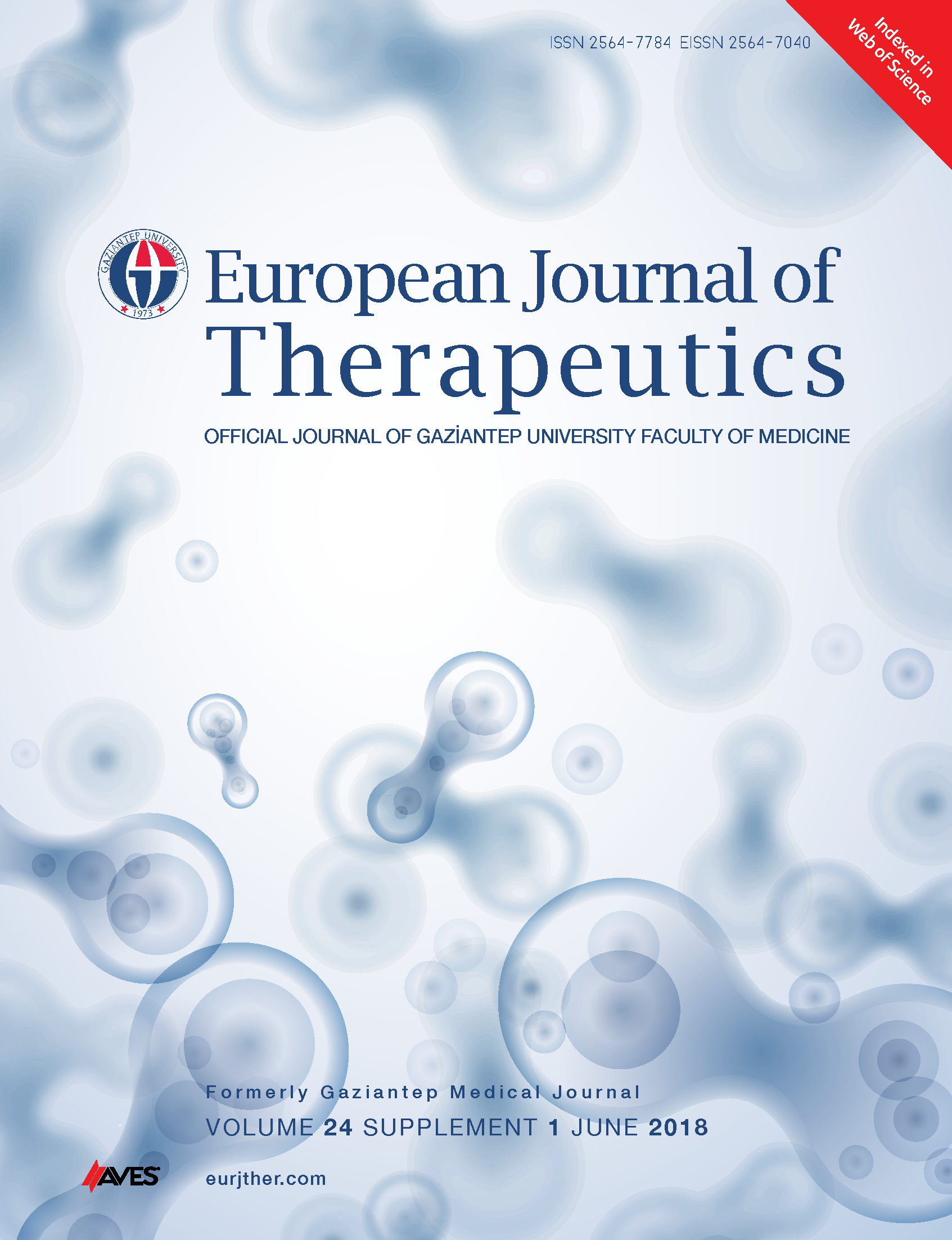What Lung Cancer Guidelines Tell Us: Are they Life Savers or Delimiting?
DOI:
https://doi.org/10.5152/EurJTher.2018.1003Keywords:
Lung cancer, guideline, limitationsAbstract
It is considered that the individual is now being ignored due to the scientific and technological developments that have been made in recent years. Medicine is conversion of scientific evidence-based knowledge to beneficial work at the hands of conscientious and experienced clinicians. The concepts forming a basis for the term “evidence based medicine” have been known for centuries and became much clearer in the seventeenth century with the publication of individual works and books. Clinical Practice Guidelines (CPGs) have become very common in medical practice. CPGs offers a serious contribution to the diagnosis, treatment and prevention of diseases. However, CPGs also have limiting aspects. Reading and assimilating a CPG is difficult, in addition to the fact that guidelines can damage the doctor’s critical approach as they do not take clinical experience into consideration. Bedside decisions, operational rules of hospitals and clinics, and governments and insurance companies’ expenses are all influenced by guidelines. The patient’s personality, social status, economic status, and reactions to the disease should definitely be taken into consideration during the application of lung cancer guidelines. It should be keep in mind that diseases can be cured in a shorter time when the doctor-patient relationship is based on respect and love, rather than simple mathematical and technological level and customer satisfaction. It is considered that the need for guidelines can be decreased with the help of individual personalities, experience, science/technology and social sciences based on ethical values and social identifiers.
Metrics
References
Gnant M. Guidelines: Usefulness and Limitations. Breast Care (Basel) 2013; 8:172-3.
Sheridan DJ, Julian DG. Achievements and Limitations of Evidence-Based Medicine. J Am Coll Cardiol 2016; 68: 204-13.
Sackett DL, Rosenberg WC, Gray JAM, Haynes RB, Richardson WS. Evidence based medicine: what it is and what it isn’t. It’s about integrating individual clinical expertise and the best external evidence BMJ 1996; 312: 71-2.
Croft P, Malmivaara A, van Tulder M. The pros and cons of evidence-based medicine. Spine (Phila Pa 1976) 2011; 36: 1121-5.
Lim W, Arnold DM, Bachanova V, Haspel RL, Rosovsky RP, Shustov AR, et al. Evidence-Based Guidelines-An Introduction. Hematology Am Soc Hematol Educ Program 2008: 26-30.
McGee DL. Evidence-Based Medicine and Clinical Guidelines. Availible From: URL: http://www.merckmanuals.com/professional/special-subjects/clinical-decision-making/evidence-based-medicine-and-clinical-guidelines
Saarni SI and Gylling HA. Evidence based medicine guidelines: a solution to rationing or politics disguised as science? J Med Ethics 2004;30: 171-5.
Geleris P and Boudoulas H. Problems Related to the Application of Guidelines in Clinical Practice: A Critical Analysis. Hellenic J Cardiol 2011; 52: 97-102
Woolf SH, Grol R, Hutchinson A, Eccles M, Grimshaw J. Potential benefits, limitations, and harms of clinical guidelines. BMJ 1999; 318: 527-30.
Osmani L, Askin F, Gabrielson E, Li QK. Current WHO guidelines and the critical role of immunohistochemical markers in the subclassification of non-small cell lung carcinoma (NSCLC): Moving from targeted therapy to immunotherapy. Semin Cancer Biol 2017.
Postmus PE, Kerr KM, Oudkerk M, Senan S, Waller DA, Vansteenkiste J, et al. Early and locally advanced non-small-cell lung cancer (NSCLC): ESMO Clinical Practice Guidelines for diagnosis, treatment and follow-up. Ann Oncol 2017; 1-21.
Ettinger DS, Wood DE, Aisner DL, Akerley W, Bauman J, Chirieac LR,et al. Non-Small Cell Lung Cancer, Version 5.2017, NCCN Clinical Practice Guidelines in Oncology. J Natl Compr Canc Netw 2017; 15: 504-35.
Travis WD, Brambilla E, Nicholson AG, Yatabe Y, Austin JHM, Beasley MB, et al. On Behalf of the WHO Panel. The 2015 World Health Organization Classification of Lung Tumors Impact of Genetic, Clinical and Radiologic Advances Since the 2004 Classification. J Thorac Oncol 2015; 10: 1243-60.
Guyatt GH, Haynes RB, Jaeschke RZ, Cook DJ, Green L, Naylor CD, et al. Users’ Guides to the Medical Literature: XXV. Evidence-based medicine: principles for applying the Users’ Guides to patient care. Evidence-Based Medicine Working Group. JAMA 2000; 284: 1290-6.
Goldman JJ and Shih TL. The Limitations of Evidence-Based Medicine-Applying Population-Based Recommendations to Individual Patients. Virtual Mentor 2011; 13: 26-30.
Downloads
Published
How to Cite
Issue
Section
License
Copyright (c) 2023 European Journal of Therapeutics

This work is licensed under a Creative Commons Attribution-NonCommercial 4.0 International License.
The content of this journal is licensed under a Creative Commons Attribution-NonCommercial 4.0 International License.


















